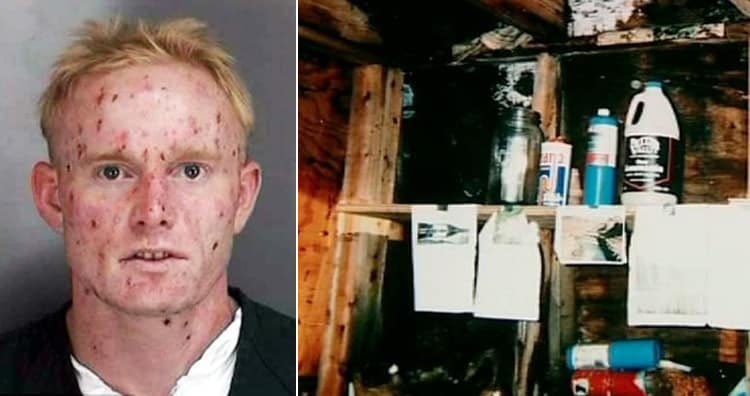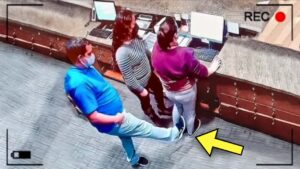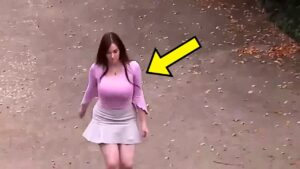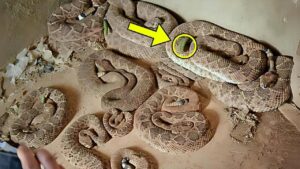In 1995, the quiet suburban streets of Commerce Township, Michigan, were disrupted by an unusual sight.
Vehicles emblazoned with EPA logos, accompanied by the police, rolled through the town. Neighbors watched in fascination as they descended on a house in their neighborhood.
Soon, the home was encircled by caution tape and buzzing with people in hazmat suits. What was going on in this quiet suburban neighborhood?
Residents were baffled when they found out what was really going on: A teenage boy was building a nuclear reactor in his backyard.
Dubbed the “Radioactive Boy Scout” and the “Nuclear Boy Scout,” David Hahn gained notoriety for his bold and stupid attempt to construct a homemade nuclear reactor in his mother’s backyard shed at the tender age of 17.
This article delves into the captivating story of David Hahn, tracing his journey from an inquisitive young boy to a figure of both fascination and caution.
From Protons To Prodigy: The Early Years Of David Hahn
Born in 1976 in Royal Oak, Michigan, David Hahn displayed an early obsession for science. As a child, he was captivated by the mysteries of the natural world.
By ten years old he was conducting experiments and tinkering with projects in his bedroom laboratory. By the age of 14 he had already synthesized nitroglycerin.
His parents thought it was all innocent fun until a small explosion in his bedroom forced him to move his lab into the basement. This gave him more room and even more privacy to experiment in.
His passion for science was further influenced when his step-grandfather gave him “The Golden Book of Chemistry Experiments.”
This book provided detailed instructions on setting up a safe and functional home laboratory, including how to acquire basic equipment and chemicals. It offered a wide array of simple and innocent experiments like making invisible ink, creating crystals, and testing for different substances.
But it also had experiments that would never be allowed in a kid’s chemistry book today such as making a rocket engine out of potassium chlorate and sugar, then igniting the mixture to create a small rocket-like propulsion.
Another shocking experiment in the book was detailed instructions on how to make chloroform out of common household chemicals, such as bleach and acetone.
David recounts that he made the chemical and actually put it to his face and smelled it, per the book’s instructions, and passed out for more than an hour.
When he wasn’t in his room experimenting, he was on the hunt to collect samples of every element in the periodic table, including the radioactive ones.
As his experiments grew more elaborate and dangerous, his father suggested he join the Boy Scouts, hoping it would offer structure and redirect his scientific pursuits into safer channels.
Hahn’s involvement in the Boy Scouts only further fueled his scientific aspirations. He eagerly collected merit badges, but when he saw the Atomic Energy badge, he made it his mission to obtain it.
The allure of harnessing the power of the atom captivated his imagination, and that became the new focus of his experiments.
A Troubled Home
Behind David Hahn’s reckless scientific pursuits lay a troubled family history. His mother, Patty, grappled with alcoholism and depression. Patty’s battle with her demons took a devastating toll on her health.
She was diagnosed with depression and schizophrenia and spent time in a mental hospital when David was a child. When he was nine years old, his parents divorced.
Thanks to his father’s idea to join the Boy Scouts and channel his destructive experiments into other areas, David Hahn began to build a functional nuclear reactor in the backyard shed.
Specifically, he wanted to build a breeder reactor – a type of reactor capable of producing more fissile material than it consumes.
His mother and stepfather had no idea what he was doing. They didn’t mind as long as he wasn’t burning the house down. Working in secrecy, he assembled a makeshift laboratory.
Determined to build a breeder reactor, Hahn contacted the Nuclear Regulatory Commission, using aliases and fabricated stories to obtain the information and materials he needed.
For radioactive elements, he took apart household items and scavenged junkyards. He got Americium-241 from smoke detectors, radium-226 scavenged from antique clocks, and thorium-232 obtained from camping lantern mantles.
Using a lead block with a hole drilled into it as his “reactor,” he used lithium extracted from a thousand dollars worth of batteries to purify thorium ash, using a Bunsen burner to heat the mixture.
He did all this in a suburban backyard shed without adequate safety precautions. The potential for radiation exposure and environmental contamination was high. He posed a significant risk to himself and those around him.
Building The Reactor
By combining various radioactive materials, he inadvertently created a crude neutron source. This means his setup was actually generating free neutrons, the subatomic particles essential for triggering and sustaining nuclear fission reactions.
Although he was producing neutrons, Hahn’s experiment fell far short of creating a self-sustaining chain reaction necessary for a breeder reactor.
His materials were impure, his methods inefficient, and he just didn’t know enough about nuclear physics to pull it off.
Despite the experiment’s failure to achieve its goal, the presence of a neutron source meant that radiation was being emitted. This radiation, primarily in the form of gamma rays, was strong enough to be detected several houses away from his backyard shed.
Discovery
David Hahn’s secret nuclear project remained hidden from the world for months until a fateful encounter with the police in 1994. During a routine traffic stop, officers discovered suspicious materials in his car, triggering an investigation that led them to the backyard reactor.
The discovery sent shockwaves through the community and beyond. The EPA, recognizing the potential environmental hazard, swiftly intervened.
Hahn’s property was declared a Superfund cleanup site, and a massive operation was launched to decontaminate the area. The shed, along with its radioactive contents, was dismantled and transported to a low-level nuclear waste disposal site in Utah.
The Fallout
Despite insistence from officials, Hahn refused to be medically evaluated following the long periods he spent around radioactive materials.
Since his experiment took place with minimal protection, Hahn’s life expectancy was likely shortened after the incident.
Following the lab’s dismantling, Hahn achieved his Eagle Scout rank despite efforts to rob him of the honor on account of his dangerous experiment. However, regardless of what progress he made, Hahn’s life went downhill from there.
In 1996, Patty Hahn’s emotional struggles became too much, and she took her own life. The loss deeply affected the already depressed 18-year-old who had just been dumped by his girlfriend.
Military Career
After graduating from high school, he briefly attended Macomb Community College but found the academic atmosphere didn’t suit him, and he dropped out after just a year. At the age of 19, he enlisted in the United States Navy.
Hahn served as an undesignated seaman aboard the aircraft carrier USS Enterprise. He served on a four-year tour and eventually achieved the rank of third-class petty officer as an interior communications specialist.
After the Navy, Hahn enlisted in the United States Marine Corps and was stationed in North Carolina. He continued to progress in his military career, reaching the rank of lance corporal.
However, after a rotation in Japan, Hahn was honorably discharged on medical grounds, reportedly due to mental health issues.
Second Neutron Source And FBI Investigation
In 2007, an anonymous tip alerted the FBI to Hahn’s alleged possession of a second neutron source, supposedly stored in his freezer.
Upon receiving the tip, the FBI conducted a phone interview with Hahn. While he denied possessing any radioactive materials, the agency deemed further investigation was necessary to ensure public safety due to his past.
This led to a face-to-face interview at an FBI office where Hahn faced a series of questions about his past and current activities.
The investigation dove into various aspects of Hahn’s life, including his attempts to promote a book and film about his teenage experiments, a prior incident involving theft, and his mental health struggles, including that he was diagnosed with paranoid schizophrenia.
The FBI ultimately concluded that there was no imminent threat posed by Hahn and let him go.
A few months later, David was charged with larceny after stealing 16 smoke detectors from his apartment building in Clinton Township, Michigan.
It was suspected that he intended to extract the americium-241 from these detectors so he could continue his dangerous experiments.
David ended up reaching a plea deal where he was only charged with attempted larceny and sentenced to 90 days in jail.
The Passing Of David Hahn
David Hahn’s life after the backyard reactor incident was marked by a series of disappointments and challenges.
He continued to struggle with mental health issues and the loss of his mother. His legal troubles and thwarted attempt to rebuild his reactor only plunged him further into the dark.
In 2016, David Hahn passed away at his home in Shelby Charter Township, Michigan. He was 39 years old.
The official cause of death was an accidental overdose resulting from a fatal combination of alcohol, fentanyl, and diphenhydramine. The medical examiner’s report showed a significantly elevated blood alcohol level.
Hahn’s fascination with science was admirable, but his lack of formal training combined with untreated mental health issues led him down a perilous path.









